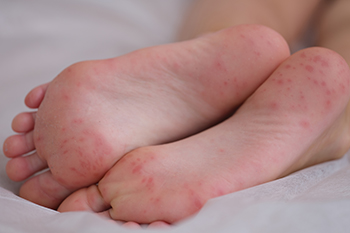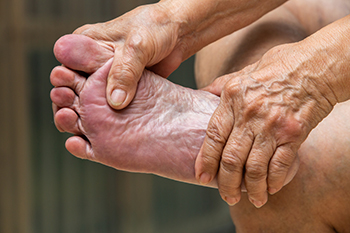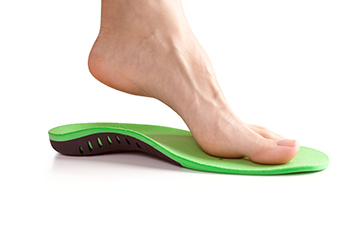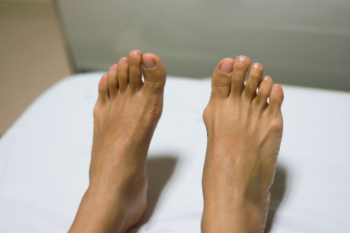Connect With Us
Blog
Items filtered by date: May 2025
Wound Care
Diabetics must be wary of all wounds, regardless of depth or size. Diabetes, a chronic disease in which the body cannot properly use glucose the way it normally would, causes various complications that make wounds difficult to heal. Nerve damage or neuropathy will cause diabetics to have trouble feeling the pain of a blister or cut until the condition has significantly worsened or become infected. A diabetic’s weakened immune system can make even the most minor of wounds easily susceptible to infection. Diabetics are also more prone to developing narrow, clogged arteries, and are therefore more likely to develop wounds.
Wounds should be taken care of immediately after discovery, as even the smallest of wounds can become infected if enough bacteria build up within the wound. To remove dirt, wounds should be first rinsed under running water only. Soap, hydrogen peroxide, or iodine can irritate the injury and should be avoided. To prevent infection, apply antibiotic ointment to the wound and cover it with a bandage. The bandage should be changed daily. The skin around the wound may be cleaned with soap.
To prevent further exacerbation, see a doctor—especially if you have diabetes. Minor skin conditions can become larger problems if not properly inspected. As the wound heals, make sure to avoid applying pressure to the affected area.
Managing Your Non-Diabetic Foot Infection

Non-diabetic foot infections can arise from various sources, including cuts, puncture wounds, or fungal infections. Symptoms often include redness, swelling, and pain, potentially accompanied by drainage or fever if severe. Causes range from minor injuries to exposure in moist environments. Immediate treatment involves cleaning the affected area with mild soap and water, applying an antibiotic ointment, and covering with a clean bandage. Keeping weight off the affected foot and elevating it can aid healing. It is important to monitor for worsening symptoms or signs of infection. For persistent infections, particularly those spreading or not responding to initial care, seeking prompt evaluation by a podiatrist is key. This type of doctor can assess the infection's severity, provide stronger antibiotics or drainage procedures if necessary, and ensure comprehensive care to promote healing and prevent complications. If you are experiencing these symptoms, it is suggested you schedule an appointment with a podiatrist for specialized treatment.
Wound care is an important part in dealing with diabetes. If you have diabetes and a foot wound or would like more information about wound care for diabetics, consult with one of our podiatrists from Redwood Podiatry Group. Our doctors will assess your condition and provide you with quality foot and ankle treatment.
What Is Wound Care?
Wound care is the practice of taking proper care of a wound. This can range from the smallest to the largest of wounds. While everyone can benefit from proper wound care, it is much more important for diabetics. Diabetics often suffer from poor blood circulation which causes wounds to heal much slower than they would in a non-diabetic.
What Is the Importance of Wound Care?
While it may not seem apparent with small ulcers on the foot, for diabetics, any size ulcer can become infected. Diabetics often also suffer from neuropathy, or nerve loss. This means they might not even feel when they have an ulcer on their foot. If the wound becomes severely infected, amputation may be necessary. Therefore, it is of the upmost importance to properly care for any and all foot wounds.
How to Care for Wounds
The best way to care for foot wounds is to prevent them. For diabetics, this means daily inspections of the feet for any signs of abnormalities or ulcers. It is also recommended to see a podiatrist several times a year for a foot inspection. If you do have an ulcer, run the wound under water to clear dirt from the wound; then apply antibiotic ointment to the wound and cover with a bandage. Bandages should be changed daily and keeping pressure off the wound is smart. It is advised to see a podiatrist, who can keep an eye on it.
If you have any questions, please feel free to contact our offices located in Eureka and Arcata, CA . We offer the newest diagnostic and treatment technologies for all your foot care needs.
Geriatrics and Podiatry
Bone density loss, dry skin, poor circulation, and rough and brittle nails are some of the common problems that can occur as people age. The effect that these problems has on foot health should be of particular concern in comprehensive geriatric care.
Feet that are diseased or injured have a negative effect on overall health and safety. Painful feet limit a person’s willingness and ability to stay active. Poor foot health can also cause gait change, which can lead to falls and accidents. Even though recovery time from health problems naturally slows as we age, many foot problems can be avoided altogether with regular prophylactic care.
Feet should be thoroughly washed in warm water daily. Care must be taken to dry the feet well, making sure to dry between and under the toes. Any left-over moisture can cause problems like foot fungus. After cleaning feet carefully check for problems such as cracked skin, bruises, swelling, cuts, corns, or other irregularities.
Examine toenails for ingrown, jagged, or split nails. Long toenails should be cut straight across. Never cut toenails at an angle or down the side as this may lead to ingrown nails.
Cracked and dry feet should be treated once or twice a day with a non-greasy moisturizer. Rub the moisturizer into the skin and allow it to dry before putting on socks and shoes. Sweaty feet can be dusted with a small amount of talcum powder. Avoid putting talcum directly into shoes as this may make feet slip within the shoe and cause a serious fall.
Wear clean dry socks each day. Not only do clean socks feel better on the feet, but socks worn for longer periods may harbor disease and odor-causing bacteria. Socks should not be tight around the top as they can leave marks on the leg. Socks that are too small can bring about bruising caused by pressure against the toes.
Wear comfortable and well-fitting shoes. If possible, consult a professional footwear specialist when purchasing shoes. Do not walk around barefoot as this exposes the feet to possible injury and bacteria.
Good foot health allows a more active lifestyle, which improves blood flow. Good circulation aids in recovery from injury or illness. It is also important for maintaining overall health.
Serious health problems can manifest themselves as symptoms in the feet. The elderly should seek professional help from a podiatrist if experiencing foot problems like tingling, numbness, pain, infection, or a sore that does not heal. Taking care of these problems right away can prevent the development of severe cases.
The Importance of Geriatrics
 Geriatrics is a branch of medicine focused on the health care of older adults. As people age, their bodies undergo various changes, making them more susceptible to certain health conditions, including foot and ankle problems. Geriatric podiatrists specialize in diagnosing and treating these issues, particularly arthritis, diabetic foot complications, and decreased circulation. Thinning skin and age-related foot deformities are also examined. Additionally, podiatrists provide comprehensive care to help seniors maintain mobility and an independent lifestyle. Regular foot exams by a geriatric podiatrist can help prevent falls, alleviate pain, and address any concerns related to foot health in older adults. If you or a loved one are experiencing foot problems associated with aging, scheduling a consultation with a geriatric podiatrist can be beneficial. By placing emphasis on preventive measures and early intervention, geriatric podiatrists will assist in advocating for healthy aging and enhanced quality of life among older adults. For guidance on foot problems related to aging, it is suggested that you consult a geriatric podiatrist for an effective approach to maintaining a vibrant lifestyle.
Geriatrics is a branch of medicine focused on the health care of older adults. As people age, their bodies undergo various changes, making them more susceptible to certain health conditions, including foot and ankle problems. Geriatric podiatrists specialize in diagnosing and treating these issues, particularly arthritis, diabetic foot complications, and decreased circulation. Thinning skin and age-related foot deformities are also examined. Additionally, podiatrists provide comprehensive care to help seniors maintain mobility and an independent lifestyle. Regular foot exams by a geriatric podiatrist can help prevent falls, alleviate pain, and address any concerns related to foot health in older adults. If you or a loved one are experiencing foot problems associated with aging, scheduling a consultation with a geriatric podiatrist can be beneficial. By placing emphasis on preventive measures and early intervention, geriatric podiatrists will assist in advocating for healthy aging and enhanced quality of life among older adults. For guidance on foot problems related to aging, it is suggested that you consult a geriatric podiatrist for an effective approach to maintaining a vibrant lifestyle.
If you need your feet checked, contact one of our podiatrists of Redwood Podiatry Group. Our doctors will attend to all of your foot and ankle needs and provide you with quality treatment.
Geriatrics and Podiatry
When people age, some common issues that may occur are bone density loss, dry skin, poor circulation, and rough brittle nails. These issues may also affect your foot health if the necessary steps are not taken to alleviate the problems.
It is important to take care of your feet because feet that are injured or diseased can affect your overall health. Having painful feet hinders your ability to do daily activities or may decrease your willingness to do the things that you need to do.
Visiting Your Geriatrician
As we age, health problems become more likely, so it is essential to visit your doctor for check-ups to ensure that you are doing the best you can to take care of your health. It is recommended to check your feet frequently for any possible cuts, bruises, swelling, corns or any other irregularities.
Taking Care of Elderly Feet
Cracked or dry feet can be treated by applying moisturizer often. It is also important not to wear old socks because the older the sock is, the higher the possibility there will be that there is bacteria there. Wear fresh socks and make sure they fit properly.
Proper foot health means that you can have a more active lifestyle and you will not be bogged down by pain. Foot health also leads to good circulation, which is paramount for overall health.
If you have any questions, please feel free to contact our offices located in Eureka and Arcata, CA . We offer the newest diagnostic tools and technology to treat your foot and ankle needs.
Ankle Foot Orthotics for Athletes
Ankle foot orthotics are shoe inserts that offer support to control the placement and movement of the ankle, correct deformities, and compensate for weakness. These inserts are used to stabilize the foot and ankle and provide toe clearance during the swing phase of gate.
Athletes often suffer foot problems because their feet are not being supported within the shoe. Ankle and foot orthotics are custom made inserts that alleviate stress on the foot. However custom orthotics should be prescribed by a podiatrist who specializes in customized footwear and orthotics design. These inserts are used by athletes for different reasons. Runners use orthotics to absorb shock at heel contact and to set up the forefoot for push-off. Basketball players wear them to control their forefeet while jumping and running.
The two main types of orthotics are over-the-counter orthotics and custom-made orthotics. To be eligible for custom orthotics, an examination of the foot and ankle will need to be completed. Afterward, both the foot and ankle will need to be casted and fitted for the proper orthotic. When the fitting process is complete, adjustments can be made to make sure everything fits perfectly.
Over the counter orthotics tend to be more popular than custom fit ones. Athletes who have less severe aches and pains in the foot, ankle or lower back area can use the over-the-counter version of orthotics. Unfortunately, over-the-counter orthotics tend to not work in treating severe injuries or ailments. Whenever you suspect you may need an ankle foot orthotic, you should consult with your podiatrist to determine which type of orthotic is right for you.
Orthotics Can Help With Arch Support

Proper arch support is essential for maintaining foot health and preventing discomfort. While over-the-counter arch supports are available at many sports and shoe stores, custom orthotics prescribed by a podiatrist can offer personalized relief for those suffering from arch pain. These medical devices are designed and created specifically for your foot. Customized orthotics for arch support help to rebuild the foot’s natural strength by providing targeted support, thereby preventing further injury and aiding in the repair of existing damage. The rigidity of these supports ensures that the arches remain elevated while allowing some flexibility for natural movement. In severe cases, continuous support methods like taping can be beneficial, providing consistent arch stability even when barefoot. Consulting with a podiatrist is vital for ensuring the proper fit and function of your orthotic device, as improperly fitted supports can cause additional harm. If you are experiencing arch pain, it is suggested that you make an appointment with a podiatrist for an exam and treatment.
If you are having discomfort in your feet and would like to try orthotics, contact one of our podiatrists from Redwood Podiatry Group. Our doctors can provide the care you need to keep you pain-free and on your feet.
What Are Orthotics?
Orthotics are inserts you can place into your shoes to help with a variety of foot problems such as flat feet or foot pain. Orthotics provide relief and comfort for minor foot and heel pain but can’t correct serious biomechanical problems in your feet.
Over-the-Counter Inserts
Orthotics come in a wide variety of over-the-counter inserts that are used to treat foot pain, heel pain, and minor problems. For example, arch supports can be inserted into your shoes to help correct overarched or flat feet, while gel insoles are often used because they provide comfort and relief from foot and heel pain by alleviating pressure.
Prescription Orthotics
If over-the-counter inserts don’t work for you or if you have a more severe foot concern, it is possible to have your podiatrist prescribe custom orthotics. These high-quality inserts are designed to treat problems such as abnormal motion, plantar fasciitis, and severe forms of heel pain. They can even be used to help patients suffering from diabetes by treating foot ulcers and painful calluses and are usually molded to your feet individually, which allows them to provide full support and comfort.
If you are experiencing minor to severe foot or heel pain, it’s recommended to speak with your podiatrist about the possibilities of using orthotics. A podiatrist can determine which type of orthotic is right for you and allow you to take the first steps towards being pain-free.
If you have any questions please contact our offices located in Eureka and Arcata, CA . We offer the newest diagnostic and treatment technologies for all your foot and ankle needs.
Bunions
A bunion is a bump that forms at the base of the big toe. Bunions form when the big toe pushes against the next toe, which forces the big toe joint to get bigger and stick out. As a result, the skin over the bunion may start to appear red and it may feel sore.
There are risk factors that can increase your chances of developing bunions. People who wear high heels or ill-fitting shoes are more likely to develop them, in addition to those who have a genetic history of bunions or have rheumatoid arthritis.
The most obvious way to tell if you have a bunion is to look for the big toe pushing up against the toe next to it. Bunions produce a large protrusion at the base of the big toe and may or may not cause pain. Other symptoms are redness, swelling, and restricted movement of the big toe if you have arthritis.
Nonsurgical methods are frequently used to treat bunions that aren’t severe. Some methods of nonsurgical treatment are orthotics, icing and resting the foot, taping the foot, and pain medication. Surgery is usually only required in extreme cases. However, if surgery is needed, some procedures may involve removing the swollen tissue from around the big toe joint, straightening the big toe by removing part of the bone, or joining the bones of your affected joint permanently.
Your podiatrist will diagnose your bunion by doing a thorough examination of your foot. He or she may also conduct an x-ray to determine the cause of the bunion and its severity.
Bunion Relief
 A bunion, medically known as hallux valgus, is a bony bump that forms on the joint at the base of the big toe, causing the toe to deviate toward the others. It occurs due to pressure on the big toe joint, often from wearing tight or ill-fitting shoes, genetics, or foot stress. Bunions can cause pain, swelling, redness, and difficulty in walking. They may also lead to other foot problems such as calluses, corns, and hammertoes. Management options depend on the severity of the bunion and the pain it causes. For mild cases, a wait and see approach can be effective, with changes in footwear to alleviate pressure. Orthotic devices, such as custom shoe inserts, can provide support and relieve pain. When conservative treatments fail and pain or deformity is severe, surgery may be necessary to realign the bone, ligaments, and tendons. If you have a bunion that is causing you discomfort, it is suggested that you schedule an appointment with a podiatrist who can determine what the best treatment approach is for you.
A bunion, medically known as hallux valgus, is a bony bump that forms on the joint at the base of the big toe, causing the toe to deviate toward the others. It occurs due to pressure on the big toe joint, often from wearing tight or ill-fitting shoes, genetics, or foot stress. Bunions can cause pain, swelling, redness, and difficulty in walking. They may also lead to other foot problems such as calluses, corns, and hammertoes. Management options depend on the severity of the bunion and the pain it causes. For mild cases, a wait and see approach can be effective, with changes in footwear to alleviate pressure. Orthotic devices, such as custom shoe inserts, can provide support and relieve pain. When conservative treatments fail and pain or deformity is severe, surgery may be necessary to realign the bone, ligaments, and tendons. If you have a bunion that is causing you discomfort, it is suggested that you schedule an appointment with a podiatrist who can determine what the best treatment approach is for you.
If you are suffering from bunions, contact one of our podiatrists of Redwood Podiatry Group. Our doctors can provide the care you need to keep you pain-free and on your feet.
What Is a Bunion?
A bunion is formed of swollen tissue or an enlargement of boney growth, usually located at the base joint of the toe that connects to the foot. The swelling occurs due to the bones in the big toe shifting inward, which impacts the other toes of the foot. This causes the area around the base of the big toe to become inflamed and painful.
Why Do Bunions Form?
Genetics – Susceptibility to bunions are often hereditary
Stress on the feet – Poorly fitted and uncomfortable footwear that places stress on feet, such as heels, can worsen existing bunions
How Are Bunions Diagnosed?
Doctors often perform two tests – blood tests and x-rays – when trying to diagnose bunions, especially in the early stages of development. Blood tests help determine if the foot pain is being caused by something else, such as arthritis, while x-rays provide a clear picture of your bone structure to your doctor.
How Are Bunions Treated?
- Refrain from wearing heels or similar shoes that cause discomfort
- Select wider shoes that can provide more comfort and reduce pain
- Anti-inflammatory and pain management drugs
- Orthotics or foot inserts
- Surgery
If you have any questions, please feel free to contact our offices located in Eureka and Arcata, CA . We offer the newest diagnostic and treatment technologies for all your foot care needs.
Are Bunions Affecting Your Everyday Life?
Diabetic Foot Care
Diabetes can cause two problems that can potentially affect the feet: Diabetic neuropathy and Peripheral Vascular Disease. Diabetic neuropathy occurs when nerves in your legs and feet become damaged, which prevents you from feeling heat, cold, or pain. The problem with diabetic neuropathy is that a cut or sore on the foot may go unnoticed and the cut may eventually become infected. This condition is also a main cause of foot ulcers. Additionally, Peripheral vascular disease also affects blood flow in the body. Poor blood flow will cause sores and cuts to take longer to heal. Infections that don’t heal do to poor blood flow can potentially cause ulcers or gangrene.
There are certain foot problems that are more commonly found in people with diabetes such as Athlete’s foot, calluses, corns, blisters, bunions, foot ulcers, ingrown toenails, and plantar warts. These conditions can lead to infection and serious complications such as amputation. Fortunately, proper foot care can help prevent these foot problems before they progress into more serious complications.
Each day you should wash your feet in warm water with a mild soap. When you finish washing your feet, dry them carefully especially between your toes. You should also perform daily foot inspections to ensure you don’t have any redness, blisters, or calluses. Furthermore, if you are diabetic, you should always wear closed-toed shoes or slippers to protect your feet. Practicing these tips will help ensure that your feet are kept healthy and away from infection.
If you have diabetes, contact your podiatrist if you have any of the following symptoms on your feet: changes in skin color, corns or calluses, open sores that are slow to heal, unusual and persistent odor, or changes in skin temperature. Your podiatrist will do a thorough examination of your feet to help treat these problematic conditions.

